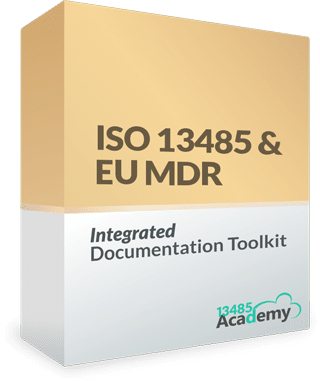The technical documentation and, if applicable, the summary thereof to be drawn up by the manufacturer shall be presented in a clear, organised, readily searchable and unambiguous manner and shall include in particular the elements listed in this Annex.
- 1.Device description and specification, including variants and accessories
- 1.1.Device description and specification
- product or trade name and a general description of the device including its intended purpose and intended users;
- the Basic UDI-DI as referred to in Part C of Annex VI assigned by the manufacturer to the device in question, as soon as identification of this device becomes based on a UDI system, or otherwise a clear identification by means of product code, catalogue number or other unambiguous reference allowing traceability;
- the intended patient population and medical conditions to be diagnosed, treated and/or monitored and other considerations such as patient selection criteria, indications, contra-indications, warnings;
- principles of operation of the device and its mode of action, scientifically demonstrated if necessary;
- the rationale for the qualification of the product as a device;
- the risk class of the device and the justification for the classification rule(s) applied in accordance with Annex VIII;
- an explanation of any novel features;
- a description of the accessories for a device, other devices and other products that are not devices, which are intended to be used in combination with it;
- a description or complete list of the various configurations/variants of the device that are intended to be made available on the market;
- a general description of the key functional elements, e.g. its parts/components (including software if appropriate), its formulation, its composition, its functionality and, where relevant, its qualitative and quantitative composition. Where appropriate, this shall include labelled pictorial representations (e.g. diagrams, photographs, and drawings), clearly indicating key parts/components, including sufficient explanation to understand the drawings and diagrams;
- a description of the raw materials incorporated into key functional elements and those making either direct contact with the human body or indirect contact with the body, e.g., during extracorporeal circulation of body fluids;
- technical specifications, such as features, dimensions and performance attributes, of the device and any variants/configurations and accessories that would typically appear in the product specification made available to the user, for example in brochures, catalogues and similar publications.
- 1.2.Reference to previous and similar generations of the device
- an overview of the previous generation or generations of the device produced by the manufacturer, where such devices exist;
- an overview of identified similar devices available on the Union or international markets, where such devices exist.
-
2.Information to be supplied by the manufacturerR
A complete set of:
- the label or labels on the device and on its packaging, such as single unit packaging, sales packaging, transport packaging in case of specific management conditions, in the languages accepted in the Member States where the device is envisaged to be sold; and
- the instructions for use in the languages accepted in the Member States where the device is envisaged to be sold.
- 3.Design and manufacturing information
- information to allow the design stages applied to the device to be understood;
- complete information and specifications, including the manufacturing processes and their validation, their adjuvants, the continuous monitoring and the final product testing. Data shall be fully included in the technical documentation;
- identification of all sites, including suppliers and sub-contractors, where design and manufacturing activities are performed.
-
4.General safety and performance requirements
The documentation shall contain information for the demonstration of conformity with the general safety and performance requirements set out in Annex I that are applicable to the device taking into account its intended purpose, and shall include a justification, validation and verification of the solutions adopted to meet those requirements. The demonstration of conformity shall include:
- the general safety and performance requirements that apply to the device and an explanation as to why others do not apply;
- the method or methods used to demonstrate conformity with each applicable general safety and performance requirement;
- the harmonised standards, CS or other solutions applied; and
- the precise identity of the controlled documents offering evidence of conformity with each harmonised standard, CS or other method applied to demonstrate conformity with the general safety and performance requirements. The information referred to under this point shall incorporate a cross-reference to the location of such evidence within the full technical documentation and, if applicable, the summary technical documentation.
-
5.Benefit-risk analysis and risk management
The documentation shall contain information on:
-
6.Product verification and validation
The documentation shall contain the results and critical analyses of all verifications and validation tests and/or studies undertaken to demonstrate conformity of the device with the requirements of this Regulation and in particular the applicable general safety and performance requirements.
- 6.1.Pre-clinical and clinical data
- results of tests, such as engineering, laboratory, simulated use and animal tests, and evaluation of published literature applicable to the device, taking into account its intended purpose, or to similar devices, regarding the pre-clinical safety of the device and its conformity with the specifications;
- detailed information regarding test design, complete test or study protocols, methods of data analysis, in addition to data summaries and test conclusions regarding in particular:
- the biocompatibility of the device including the identification of all materials in direct or indirect contact with the patient or user;
- physical, chemical and microbiological characterisation;
- electrical safety and electromagnetic compatibility;
- software verification and validation (describing the software design and development process and evidence of the validation of the software, as used in the finished device. This information shall typically include the summary results of all verification, validation and testing performed both in-house and in a simulated or actual user environment prior to final release. It shall also address all of the different hardware configurations and, where applicable, operating systems identified in the information supplied by the manufacturer);
- stability, including shelf life; and
- performance and safety.
Where applicable, conformity with the provisions of Directive 2004/10/EC of the European Parliament and of the Council (1) shall be demonstrated.
Where no new testing has been undertaken, the documentation shall incorporate a rationale for that decision. An example of such a rationale would be that biocompatibility testing on identical materials was conducted when those materials were incorporated in a previous version of the device that has been legally placed on the market or put into service;
- the clinical evaluation report and its updates and the clinical evaluation plan referred to in Article 61(12) and Part A of Annex XIV;
- the PMCF plan and PMCF evaluation report referred to in Part B of Annex XIV or a justification why a PMCF is not applicable.
- 6.2.Additional information required in specific cases
- Where a device incorporates, as an integral part, a substance which, if used separately, may be considered to be a medicinal product within the meaning of point 2 of Article 1 of Directive 2001/83/EC, including a medicinal product derived from human blood or human plasma, as referred to in the first subparagraph of Article 1(8), a statement indicating this fact. In this case, the documentation shall identify the source of that substance and contain the data of the tests conducted to assess its safety, quality and usefulness, taking account of the intended purpose of the device.
- Where a device is manufactured utilising tissues or cells of human or animal origin, or their derivatives, and is covered by this Regulation in accordance with points (f) and (g) of Article 1(6), and where a device incorporates, as an integral part, tissues or cells of human origin or their derivatives that have an action ancillary to that of the device and is covered by this Regulation in accordance with the first subparagraph of Article 1(10), a statement indicating this fact. In such a case, the documentation shall identify all materials of human or animal origin used and provide detailed information concerning the conformity with Sections 13.1. or 13.2., respectively, of Annex I.
- In the case of devices that are composed of substances or combinations of substances that are intended to be introduced into the human body and that are absorbed by or locally dispersed in the human body, detailed information, including test design, complete test or study protocols, methods of data analysis, and data summaries and test conclusions, regarding studies in relation to:
- absorption, distribution, metabolism and excretion;
- possible interactions of those substances, or of their products of metabolism in the human body, with other devices, medicinal products or other substances, considering the target population, and its associated medical conditions;
- local tolerance; and
- toxicity, including single-dose toxicity, repeat-dose toxicity, genotoxicity, carcinogenicity and reproductive and developmental toxicity, as applicable depending on the level and nature of exposure to the device.
- In the case of devices containing CMR or endocrine-disrupting substances referred to in Section 10.4.1 of Annex I, the justification referred to in Section 10.4.2 of that Annex.
- In the case of devices placed on the market in a sterile or defined microbiological condition, a description of the environmental conditions for the relevant manufacturing steps. In the case of devices placed on the market in a sterile condition, a description of the methods used, including the validation reports, with respect to packaging, sterilisation and maintenance of sterility. The validation report shall address bioburden testing, pyrogen testing and, if applicable, testing for sterilant residues.
- In the case of devices placed on the market with a measuring function, a description of the methods used in order to ensure the accuracy as given in the specifications.
- If the device is to be connected to other device(s) in order to operate as intended, a description of this combination/configuration including proof that it conforms to the general safety and performance requirements when connected to any such device(s) having regard to the characteristics specified by the manufacturer.
In the absence of such studies, a justification shall be provided.

